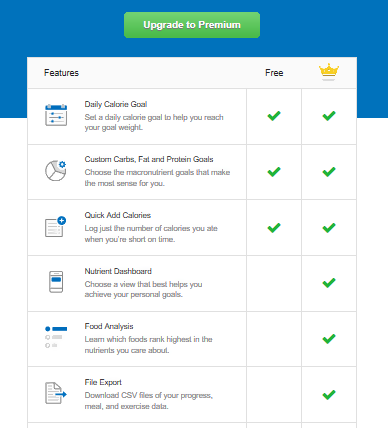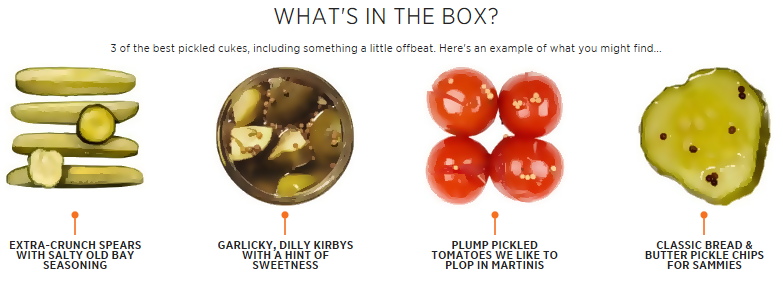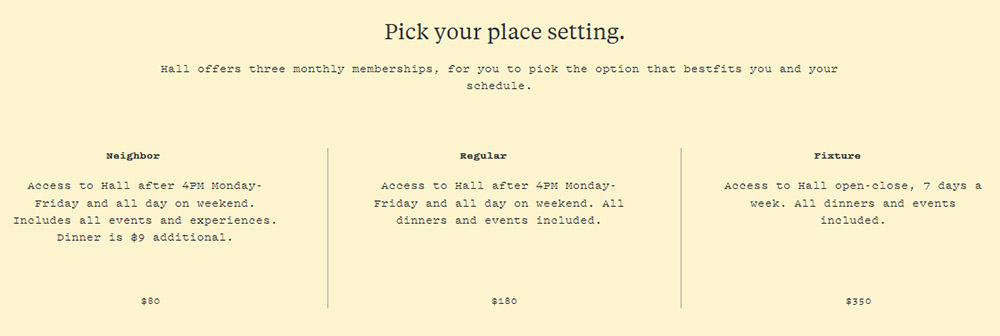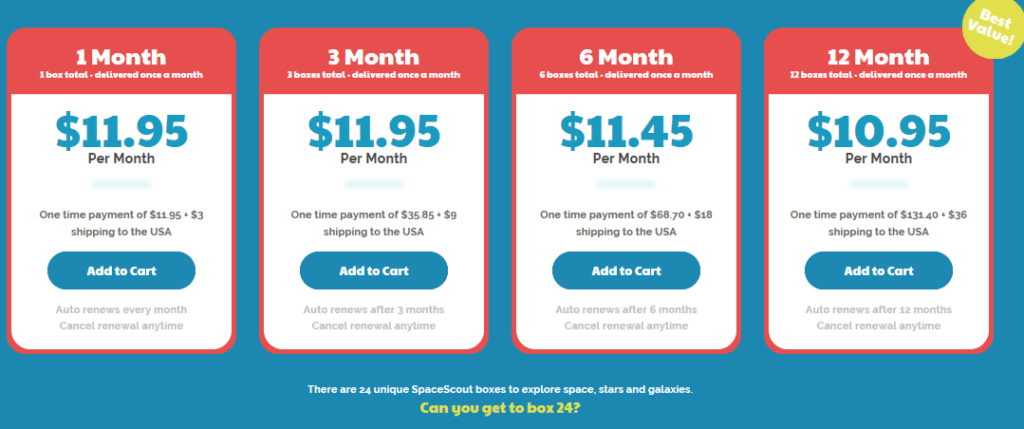In National Lampoon’s Christmas Vacation, our favorite misfit father anxiously awaits his Christmas bonus after overextending his finances to make a down payment on a pool. On Christmas Eve, his bonus arrives, much later than anticipated.
With a drumroll, he opens the envelope in front of his family and pulls out a subscription to the Jelly of the Month Club.
“Clark,” his cousin says earnestly, “that’s the gift that keeps on givin’ the whole year.”
Since then, employee benefits have changed significantly. And not all subscriptions are built like the Jelly of the Month Club.
For example, many large companies provide their employees with benefits such as MDLIVE, a telehealth provider. Employers pay the subscription price. If an employee chooses to have a virtual doctor’s appointment in the convenience of their own home, they simply pay a fee comparable to a co-pay at a traditional physician’s office.
Subscription and e-commerce businesses such as this have been growing at a steady pace, and according to the Subscription Trade Association, “companies throughout North America, Europe, and the Asia Pacific have seen subscription-based sales increase by more than 300 percent.”
Let’s take a look at other businesses making innovative strides in the subscription billing space.
1. The cradle customers
There are more than 74 million children in the United States between the ages of 0-17, making up around 22% of the population. As subscription businesses continue to grow, companies that develop products for kids are stepping into the recurring billing arena.
Before a baby is even born, she can generate a subscription. The Walmart Baby Box is free, save for $5 per box to cover shipping and handling. Simply fill out the form, indicate your baby’s gender (if known) and due date, and you can receive a prenatal box, newborn/infant box, or toddler box filled with samples. If you start with the first box, the subscription automatically renews when your baby enters the next life stage.
There are a number of businesses offering security for children. Kids GPS (global positioning systems) devices help ensure children’s safety by creating virtual fences, providing two-way communication between children and caregivers, and allowing automatic location updates. Some gadgets even contain games to entice children to keep their wearable device on.
When it’s time for entertainment, move over Netflix. Disney removed all its movies from the popular movie streaming platform in November 2019, and Disney Plus has built a following of nearly 87 million subscribers.
2. Financial subscriptions help the budget-conscious
We all know managing home finances can be challenging on a good day, and managing both short-term and long-term money matters takes a lot of effort. Not only are there budgets to manage, expenses to pay, and spending to control, but once a year, tax season rolls around.
According to some reports, not only do 22% of Americans have less than $5,000 saved for retirement, but 15% have no retirement savings at all.
However, there are some interesting subscriptions that take money management to a whole new level by helping users leverage their fiscal health.
Acorns is a unique product that encourages people to invest their spare change in a financial portfolio that’s managed by investment experts. For example, if you go to the pharmacy and spend $19.20, Acorns automatically takes the remaining 80 cents and invests it. Fully FDIC-insured, the money invested is also covered by fraud protection. Subscriptions start at $1 per month until you have $1 million invested.

If you want to ‘squirrel’ away your finances with other budgeting software, Goodbudget is built on the premise of using virtual ‘envelopes’ for specific uses, such as groceries or entertainment. There is both a free plan and a more advanced plan that accounts for up to 7 years of budgeting history, plus support for more devices and unlimited envelopes.
When it is time to start looking at taxes, TaxAct is a SaaS provider that backs its subscription with a $100k accuracy guarantee. They can also take care of simple to complex returns that factor in rental income and other investments.
3. Insurance businesses help compensate careful drivers
Of course, budgeting goes hand in hand with the need to reduce costs. Many insurance carriers are taking advantage of telematics: telecommunication devices within a vehicle. With telematics, devices such as a GPS system can be combined with different sensors, measuring items such as speed, braking habits, and turning rates.
This data is then collected and transmitted to the insurance provider, who can alter invoices accordingly. In other words, by proving safe driving habits, a driver can have his premiums reduced.
According to Aviva, a multinational insurance carrier based in the United Kingdom, 82% of consumers they spoke with felt that the most unfair practice in the insurance industry was price disparity—the difference between what is charged and the coverage delivered. A few months ago, the insurance company launched AvivaPlus, the first subscription-based insurance in the UK.
Interestingly, trends are increasingly leaning toward addressing home insurance premiums through IoT, or the Internet of Things. We are already in the process of creating ‘smart’ homes with ‘smart’ devices, essentially making inanimate objects such as light bulbs responsive to voice commands. By deploying other sensors throughout the house, it will become easier to monitor potential costly issues such as freezing water pipes in the winter.
As telematics and IoT trends continue to gain traction and popularity, and as devices and sensors continue to become smaller and more affordable, insurance subscriptions are going to become more readily available.
In fact, some estimates predict that by the end of 2021, more than 800 zettabytes per year (one zettabyte equals a trillion gigabytes) of IoT data will be generated.
Affordability with IoT improvements is also being passed on to the customer. Home security and monitoring are no longer just for the wealthy. With smaller, more affordable devices, systems can provide security, monitor for fires and gas leaks, and detect flooded basements or frozen pipes. Subscriptions for SimpliSafe start at around 50 cents a day and range depending on your dwelling and security needs.
4. Healthcare subscriptions promote mental and physical wellness
The traditional healthcare model was disrupted in 1996: Dr. Howard Maron sought to reduce the doctor/patient ratio by providing healthcare to only a handful of patients at a time. The ‘concierge medicine’ model took hold, with a goal to limit the doctor-to-patient ratio to 50 patients per doctor.
Two and a half decades later, MD2 (pronounced MD-squared) has offices across the United States, with participating physicians adhering to the 50:1 rule and ensuring individualized healthcare.
Non-traditional healthcare provision has continued to emerge from the recurring billing model, from subscriptions to other wellness approaches.
There are a number of circumstances where someone experiencing a behavioral health challenge needs help demystifying their condition. TAO (Therapy Assistance Online) provides virtual therapy for subscribers suffering from a variety of situations, from relationship concerns to anxiety and depression.
Based in St. Petersburg, Florida, subscribers are given online screening tools prior to entering specific educational modules and virtually meeting with a therapist. TAO is HIPAA (Health Insurance Portability and Accountability Act)-compliant, meaning that it has an additional security layer to protect patient information and confidentiality.
For people who want to keep physically fit, there are subscriptions such as myfitnesspal, an online platform that encourages healthy eating and exercise.
With myfitnesspal, subscribers can track what they are eating and the calories they take in, as well as the number of calories expended with exercise. Users can even upload recipe links to automatically import the nutritional information into their meal diary.
There is a free version, with an option to upgrade to a premium subscription with additional perks, such as enhanced customer support, additional content, and other nutritional settings.

Subscription offerings are even disrupting the prescription arena. For example, The Pill Club can issue birth control prescriptions in some states, and with a prescription already in hand, can ship prescriptions to other states for a monthly fee. The packages also come with free trial items… and chocolate!
For those who are looking for a monthly wellness package, try Caring Crate. Originally designed for customers with chronic illnesses, their monthly curated boxes include items such as wellness journals, aromatherapy products, bath care items, and even baking mixes.
5. Working ‘smarter’ with home-focused subscriptions
Increased access to the internet means people can get answers to questions or find help almost immediately.
We all know about sites that pair customers up with contractors, but what if you want to take care of your own home improvements? Some people have the know-how to handle their own projects, while others don’t know the difference between an adjustable wrench and a pipe wrench.
Sites such as the Family Handyman offer a monthly subscription to their DIY Quick Classes, covering projects such as replacing garbage disposals, fixing toilets, tiling backsplashes, and laying sod. Don’t know how to use a table saw? There’s a class for that.
How about those who don’t want to be weekend warriors, and just want to find someone to take care of managing their household items?
Super is a subscription that shoulders the care for items in your home, from appliances to heating systems. Super provides warranties on these items, and if they break, acts as a concierge service to bring in a repairman. They even provide friendly reminders to add to your honey-do list, telling a homeowner when it’s time to clean gutters or replace air filters.
Speaking of air filters, there are also businesses such as FilterSnap that will automatically send you filters for your furnace or refrigerator. When it’s time to swap out the old ones, you can avoid a trip to your hardware store with this easy subscription.
6. Subscriptions ‘bring you back’ with nostalgia marketing
Think back to the last time you heard a song that reminded you of growing up, whether it was a Shakira song from the 90s, Madonna from the 80s, or John Denver in the 70s (we’ll just stop there). It likely evoked a familiar feeling, one that many businesses are tapping into with nostalgia marketing, leveraging the power of reaching out on an emotional level. Correlating with this trend are a variety of different subscriptions designed to recapture those moments.
For example, who said handwritten communication was dead? Yes, more people are opting to use technology as their standard means of communication. However, there are others that still love the written word, and subscription-based businesses are capitalizing on it.
Nicely Noted is a monthly subscription that sends beautiful, original, high-quality notecards, along with envelopes and even stamps. Maybe you want to get back into the habit of sending cards, or, with a gift subscription, you can gently prod a loved one into sending you a handwritten note!
And what would be the fun of writing a note with a crummy disposable pen? For $80 a month, you can also indulge in a handmade fountain pen subscription.
Nostalgia is more than just writing. For those who want to relive the video games they played on now ‘outdated’ gaming systems, like Atari and Sega, Retro Game Challenge delivers games every month for whatever vintage game system you own. Unlike other gaming subscriptions, this isn’t a rental—users get to keep their games. Don’t have a system? The business also sells consoles.
7. Subscriptions take a bite out of competitors with subscriptions for every foodie
Next, we have fun subscription boxes that tempt—featuring things that, as the song says, “make you go hmmmm.”
For example, pickle lovers can get their fill of briny delight with the Pickle of the Month club. For a $60 pay-as-you-go plan, or by prepaying for up to a year of monthly pickle tastiness, any pickle lover can get their fill.

Not into pickles? How about bacon? There are several different bacon-themed subscriptions for the carnivore in your life at Baconfreak.com. And, as we all know, everything is better with bacon.
What if you want more than a box of bacon or a package of pickles?
There are a number of different subscription boxes for people who want to cook at home, like HelloFresh, Home Chef, and Peach Dish. These meal kits usually include proportioned ingredients and recipes so a subscriber can spice things up in the kitchen.
For those who like to be out and about, subscription meal plans are gaining traction in larger cities. For example, Hall in Boston has a unique way of bringing diners together in a meetup-style environment. Memberships open the door for coffee, dinners, events, and a place to tap into Wi-Fi or build your social network.

8. Disrupting the travel industry with tempting subscriptions
Remember the days of AAA Triptiks, where you contacted the travel agency and provided your starting point and final destination? You’d then receive maps in the mail guiding you along the route. Triptiks are still around, but they have gone virtual with maps that can be loaded right onto your mobile phone.
It’s no surprise that travel has come a long way thanks to GPS and in-car navigation systems. But sometimes, you might miss a great pit stop simply because you didn’t hear about it until you were at a gas station 50 miles past it.
Roadtrippers is an app designed to make suggestions along your chosen travel route, from diners to parks and other awesome destinations. As with many products on the market, the app is free unless you opt to upgrade to their ‘plus’ subscription to unlock additional destinations (up to 150 per trip) and live traffic conditions. Soon to be added to the Roadtrippers-plus plan is ad-free content, and special deals and discounts.
Airlines and third-party travel sites are also testing the waters with subscription-based flights. For example, Wanderift is a subscription site that provides ‘tokens’ for flights between 28 major destinations. Each token buys you one flight on a legacy carrier like Delta, American Airlines, and United Airlines.
Wanderift is a great option for frequent flyers, though keep in mind that only one unused token can roll over to the next month.
If you can’t travel, but want the world to come to you, there is a multitude of helpful subscription boxes. You can bring the ocean to a landlocked adventurer with beach-themed boxes like the Ohana Box, which is stuffed with personalized items, home goods, and Lani Makana jewelry. Or BookVoyage, which fosters cultural awareness through books and goodies from 11 different regions, including the Caribbean, the Netherlands, and China.
9. Tackling ‘the final frontier’ with space-themed subscriptions
For people who are fascinated with every nuance of space and space exploration, check out NASA Spaceflight. With a subscription rate starting at 2 months for $19.99, customers can check out different areas of space flight from the United States, as well as European, Russian, commercial, and global ventures.
Subscribers can learn more about the history of space flight, access photographs, and even check out the development of new space vehicles.
For a more kid-friendly space subscription, there are numerous monthly boxes available, such as Space Scouts. Starting at $11.95 per month, kids can enjoy space-themed items such as a lunch box, posters, activity sheets, and toys.

Notice on the Space Scouts pricing page that there is a call-out for the best value, and a challenge to collect all 24 boxes, tempting customers to subscribe for longer periods of time.
Every month, more businesses blast off into the growing world of recurring billing, proving that the trend has surpassed the stuff of National Lampoon jokes.
As MDLIVE has demonstrated, even traditional industries can pivot into subscription commerce. A successful alignment into the model requires the help of a subscription management and recurring billing platform, which:
- Provides pricing flexibility for agile monetization by enabling different pricing levels, one-time payments, and different subscription durations, such as monthly, bi-monthly, etc.
- Encourages scaling by eliminating the barriers to rapid growth that can be found in home-grown billing methods or spreadsheets.
- Ensures security by adhering to PCI (Payment Card Industry) compliance, a standard that protects customer and payment information.
- Allows integration with other platforms, such as accounting and CRM (customer relationship management) platforms. This allows seamless synchronization of information such as subscriptions, customer information, purchases, and billing information.
- Tracks customer changes with subscription upgrades or downgrades, and can bill based on usage, if necessary.
- Enhances communication with customers, using proven dunning management methods to alert customers of payment issues.
- Empowers customers by providing SSPs, or self-service portals, so they can make necessary changes to subscriptions, view invoices, and update payment information.
With 27% of consumers expecting to see the amount they spend on subscription payments increase as of 2020, there’s so much room for expansion in the subscription space. It’s all about determining what customers want, and meeting that need with flexible terms. Whether it’s tapping into fond memories or providing an extra layer of security, supporting your business with a proven subscription management and recurring billing platform will keep customer satisfaction, and retention, high.
FAQs about Subsrciption Business Model
Q: What is a subscription business model?
A subscription business model is a recurring revenue model where customers pay a recurring fee, typically weekly, monthly, or yearly, for continuous access to a product or service. This enables predictable revenue and opens opportunities for scale for businesses.
Q: Why are subscription business models advantageous for businesses?
Subscription business models offer the advantage of locking customers into the business for a longer duration, establishing a stable and recurring revenue source. The predictability of income allows for efficient and agile business planning and development.
Q: How have subscription business models evolved over time?
Subscription business models have diversified and expanded beyond traditional sectors to encompass a broad range of industries–from healthcare and insurance to home security and children’s entertainment. These models allow for flexible terms and pricing levels, which enhance customer satisfaction and retention.
Q: What role does a subscription management and recurring billing platform play in a subscription business?
A subscription management and recurring billing platform provides features that support the success of a subscription business, including pricing flexibility, scalability, security, seamless integration with other platforms, and an ability to track customer changes and billing based on usage. It also facilitates communication with customers and allows self-service portals for customers to make changes.
Q: How are subscription services affecting the healthcare industry?
Subscription services are disrupting the healthcare industry in significant ways. Services like MDLIVE, TAO (Therapy Assistance Online), and The Pill Club have introduced an innovative subscription-based approach in the healthcare landscape. They offer services from telehealth consultations to virtual therapy and prescription delivery, all predicated on the subscription model.
Q: What are examples of subscription business models in the entertainment industry?
Major companies are innovating in the space of entertainment using subscription models. Notable examples include Disney Plus, which has amassed nearly 87 million subscribers after removing its movies from Netflix. Another one is the platforms for games, with Retro Game Challenge delivering vintage games to subscribers to keep.
Q: Can security services also adopt a subscription model?
Absolutely. For instance, SimpliSafe offers subscriptions for home security and monitoring services. The affordability of subscription models makes such services accessible not just to the wealthy but also to a broader customer range.
Q: How are subscription models contributing to the finance sector?
Subscription models have been adopted in the finance sector as well, providing services that help users manage their finances, budget, and investments. Examples include Acorns, which encourages people to invest their spare change, Goodbudget with its budgeting software, and TaxAct, a SaaS provider that offers subscription-based tax filing services.
Q: How can subscription models be implemented in insurance services?
Insurance carriers are exploring subscription models as well. For example, through the use of telematics devices within a vehicle, insurers can alter invoices based on the collected data about driving habits. This can potentially lead to premium reductions for safe drivers. Similarly, the use of IoT in home insurance is also gaining traction.
Q: Are there any unique or innovative subscription models that are out of the ordinary?
Yes, there are quite a few unique subscription models as well. These include a handmade fountain pen subscription, the Pickle of the Month club, Retro Game Challenge for vintage gaming systems, and even subscription-based flights through Wanderift.







